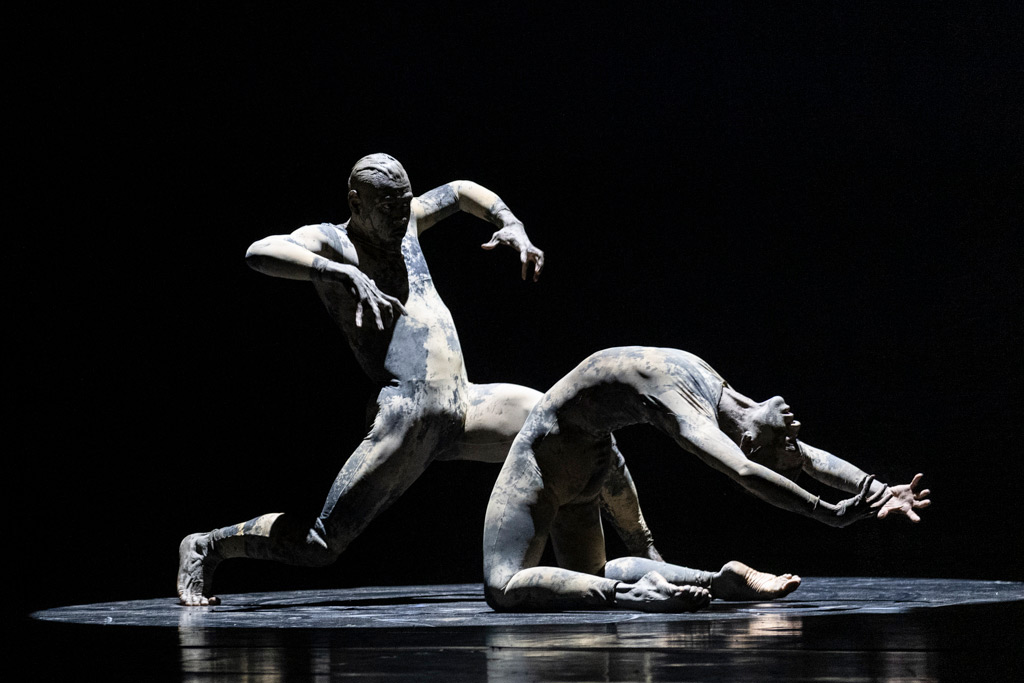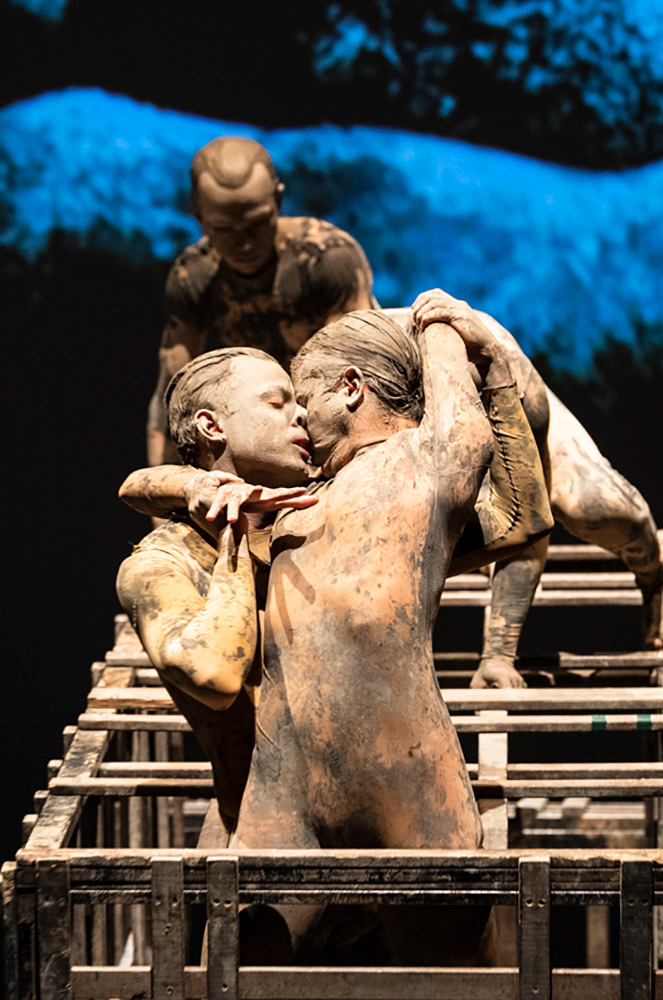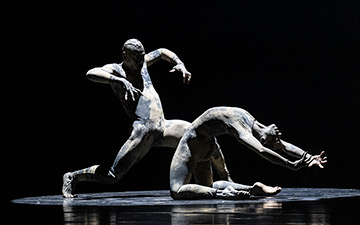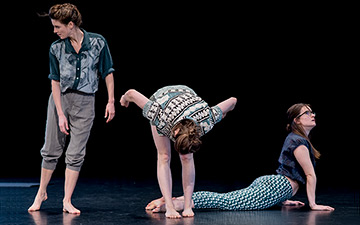
© Cafi. (Click image for larger version)
Companhia de Dança Deborah Colker
Cāo Sem Plumas (Dog Without Feathers)
★★✰✰✰
New York, Joyce Theater
4 February 2020
Gallery of pictures by Foteini Christofilopoulou
www.ciadeborahcolker.com.br
www.joyce.org
River Dance
Deborah Colker is one of the most popular contemporary dance choreographers in Brazil; a few years ago, she choreographed and coordinated the dances for the opening ceremony of the Olympics in Brazil. Her company, Companhia de Dança Deborah Colker is an infrequent visitor to New York, however. Their last visit dates from over ten years ago. Now, they’ve come to The Joyce with her recent work Cāo Sem Plumas – the title means “Dog Without Feathers” (and the title used during a UK visit last year. Ed) It’s a reference to a poem by the highly-respected Brazilian writer Joāo Cabral de Melo Neto, a meditation on the Capibaribe river in Pernambuco State in the northeast of Brazil, and the laborers who work the landscape.
In the poem, Melo Neto describes the river as being “like a dog, humble and thick-set.” His words find their reflection in a gorgeous black-and-white film by Cláudio Assis that accompanies the dance, filmed on location. The waters of the river are thick with mud; some areas along the river-bed are parched, with cracks in the earth so deep they look almost painful. The landscape is gritty, primeval, like something out of an Arthur Rackham illustration, all gnarled roots and rich earth and the tormented power of nature. On film, caked in mud, Colker’s dancers move over this primeval landscape, becoming almost part of it, strange animals in a strange land.

© Foteini Christofilopoulou. (Click image for larger version)
Meanwhile, onstage, they echo or complement the projected images. At times the striking images and lithe, hyper-flexible dancers are enough to seduce the eye. But Cāo Sem Plumas is a frustrating piece, in which the live dancing is overshadowed by film, the spoken texts mix uncomfortably with the electronic soundscape, and the choreography lacks momentum and direction. Often it feels like a series of moving tableaux vivants. One idea follows after another, without an underlying sense of purpose or tension. But something is missing; there must be more to tell.
The dancers, wearing ashen costumes that mimic the look of mud on skin, as well as white makeup, become a mass of roiling bodies, more or less indistinguishable from each other. They bend and twist, hooking arms around legs, or walking on all fours. Backs arch, hands form pincers. They are birds, quadrupeds, slithering reptiles, never quite human. Three women on pointe are like exotic birds with elegantly curving backs and long legs.

© Foteini Christofilopoulou. (Click image for larger version)
In one striking scene, the dancers join together in a kind of lattice formation and breathe as one, an organic whole. Colker clearly has an eye for ways in which to interconnect and layer bodies. Later, as we see images of shanties on the river’s edge, the dancers construct platforms and ramps out of boxes, upon which – as well as through, under, and around which – they crawl and face off in combat. The dancers are wonderfully elastic; the way in which they use their muscular backs to fold into deep bends and twists is particularly beautiful. But the choreography reduces them to a pictorialist mass, as remote as the parched riverbed. This almost abstract treatment of bodies can work well for a large event like the Olympic opening ceremonies, but in an evening of dance it wears thin.

















You must be logged in to post a comment.